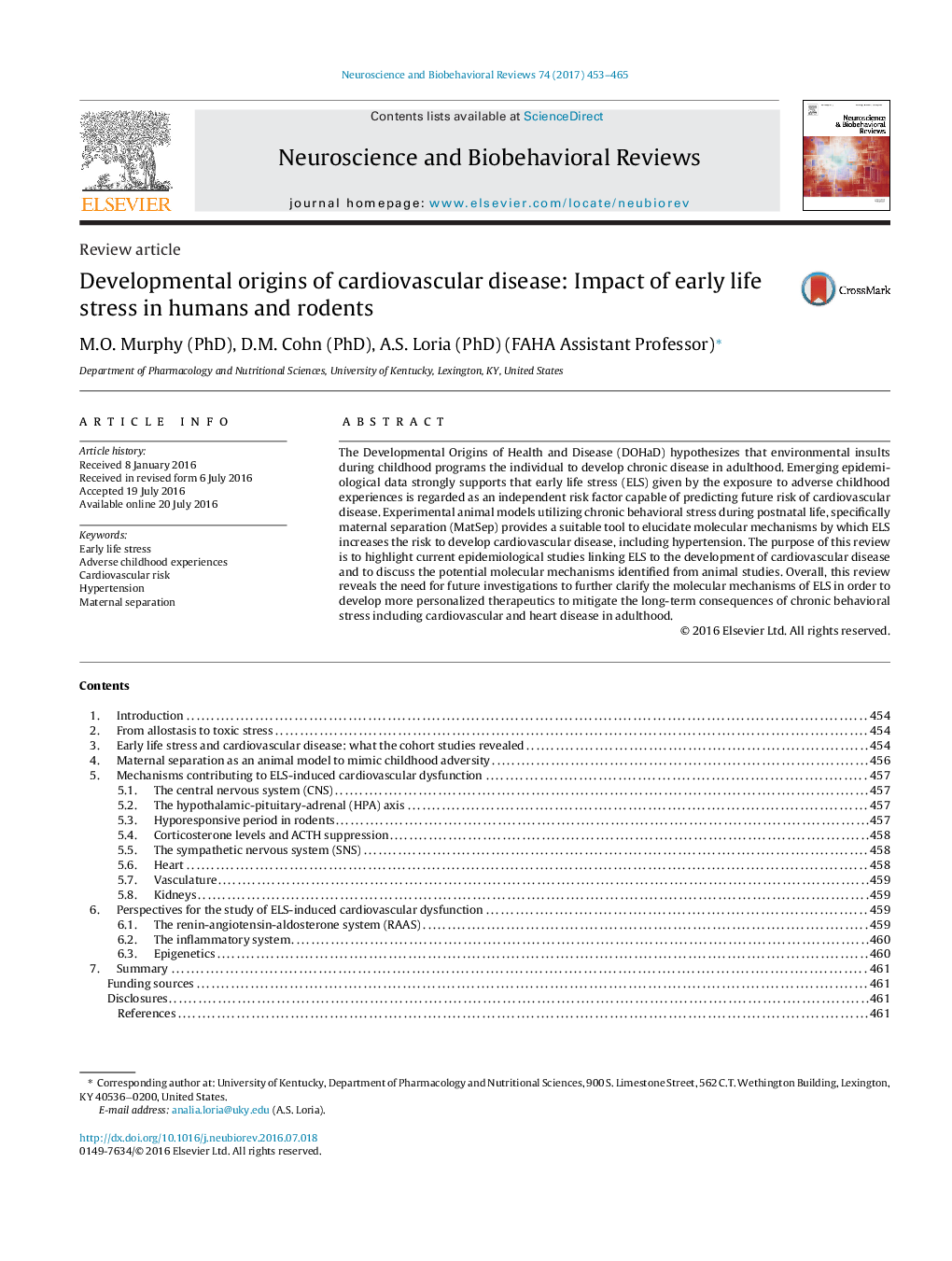| کد مقاله | کد نشریه | سال انتشار | مقاله انگلیسی | نسخه تمام متن |
|---|---|---|---|---|
| 5043632 | 1370587 | 2017 | 13 صفحه PDF | دانلود رایگان |
- Early life stress (ELS) can overwhelm an individual's capacity to adapt to a stressor, thus leading to harmful effects on the cardiovascular system in adulthood. Cohort studies have demonstrated a strong link between ELS experiences and cardiovascular disease.
- Toxic stress defined as “the excessive or prolonged activation of physiologic stress response systems in the absence of buffering protection afforded by stable responsive relationships” includes poverty, physical and sexual abuse, neglect, neighborhood violence, or the substance abuse or mental illness of a caregiver.
- Maternal separation (MatSep) is a well-established animal model of ELS and provides a paradigm to test the correlation between ELS and cardiovascular disease.
- This review focus on the roles of the central nervous system, the hypothalamic-pituitary-adrenal axis, the sympathetic nervous system, the renin-angiotensin-aldosterone system, the immune system and epigenetics.
- We conclude that ELS emerges as an independent risk factor for cardiovascular disease. This review reveals the need for further investigation in the ELS-induced mechanisms underlying future risk of premature CVD morbidity and mortality.
The Developmental Origins of Health and Disease (DOHaD) hypothesizes that environmental insults during childhood programs the individual to develop chronic disease in adulthood. Emerging epidemiological data strongly supports that early life stress (ELS) given by the exposure to adverse childhood experiences is regarded as an independent risk factor capable of predicting future risk of cardiovascular disease. Experimental animal models utilizing chronic behavioral stress during postnatal life, specifically maternal separation (MatSep) provides a suitable tool to elucidate molecular mechanisms by which ELS increases the risk to develop cardiovascular disease, including hypertension. The purpose of this review is to highlight current epidemiological studies linking ELS to the development of cardiovascular disease and to discuss the potential molecular mechanisms identified from animal studies. Overall, this review reveals the need for future investigations to further clarify the molecular mechanisms of ELS in order to develop more personalized therapeutics to mitigate the long-term consequences of chronic behavioral stress including cardiovascular and heart disease in adulthood.
Journal: Neuroscience & Biobehavioral Reviews - Volume 74, Part B, March 2017, Pages 453-465
